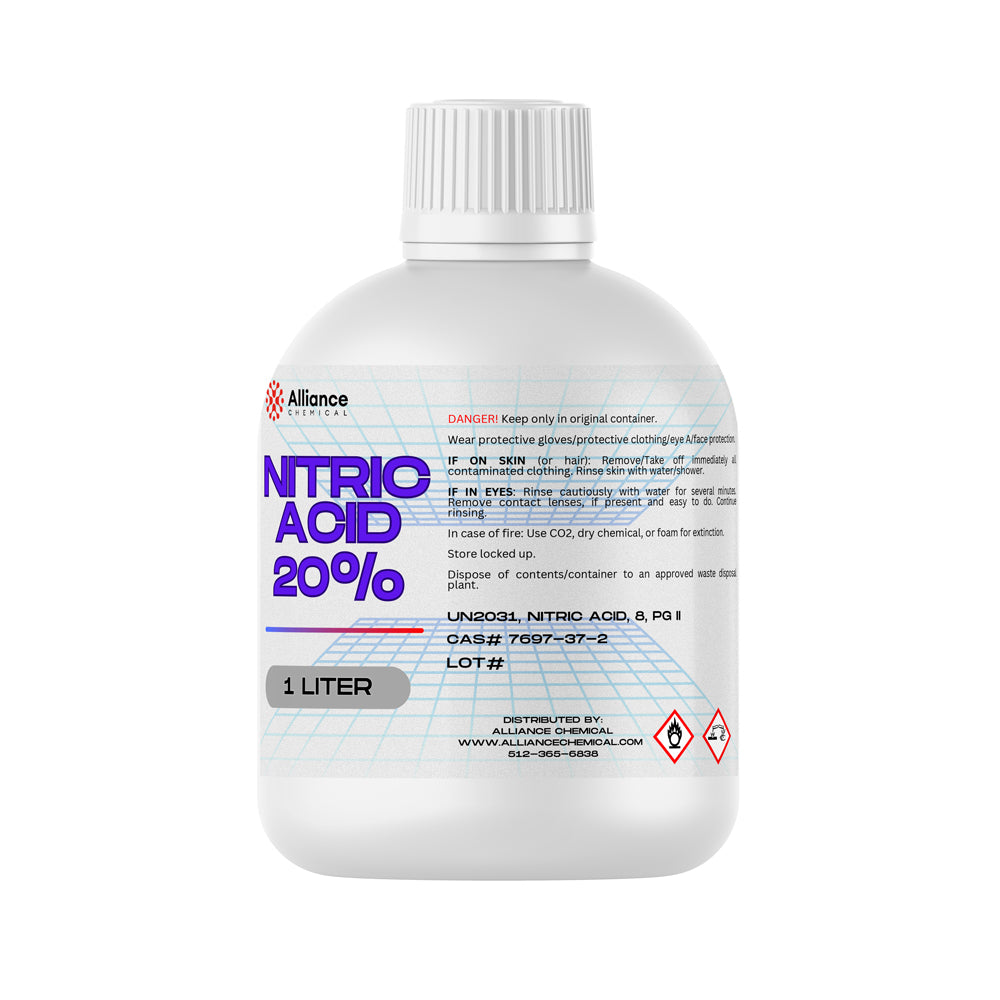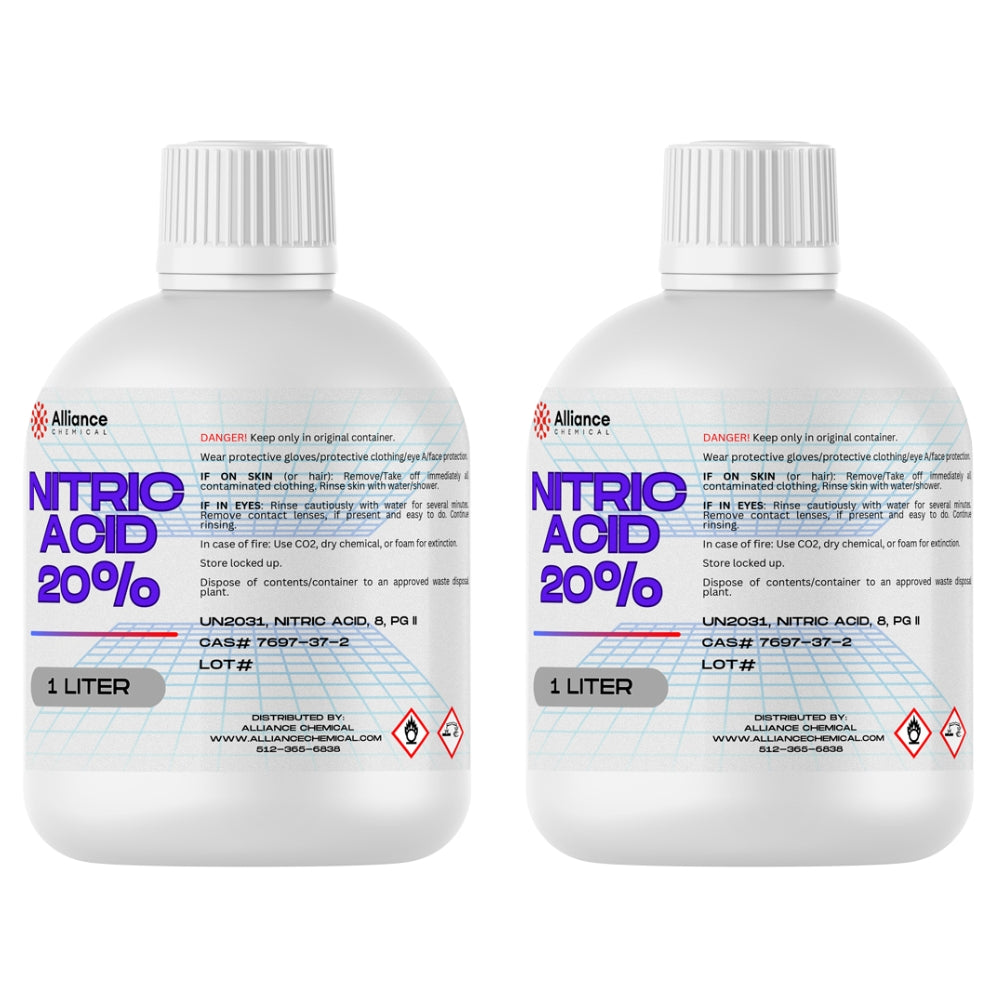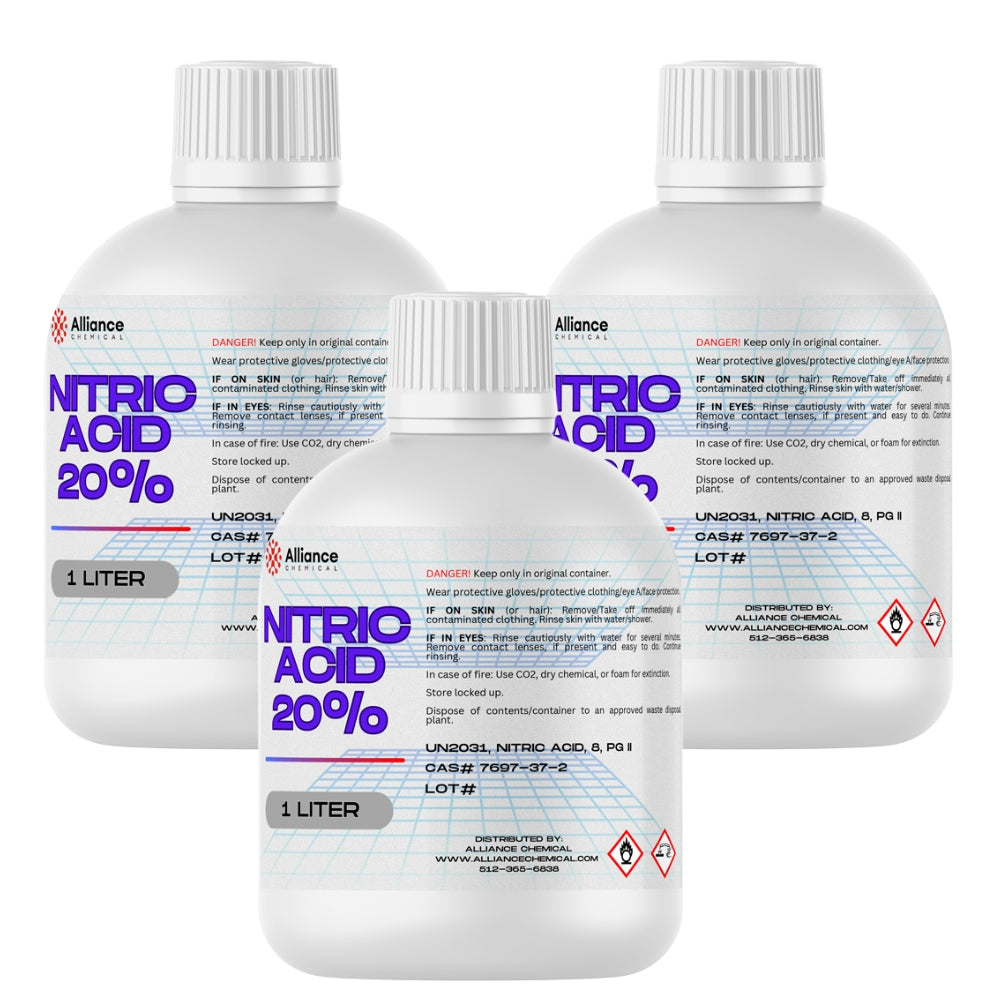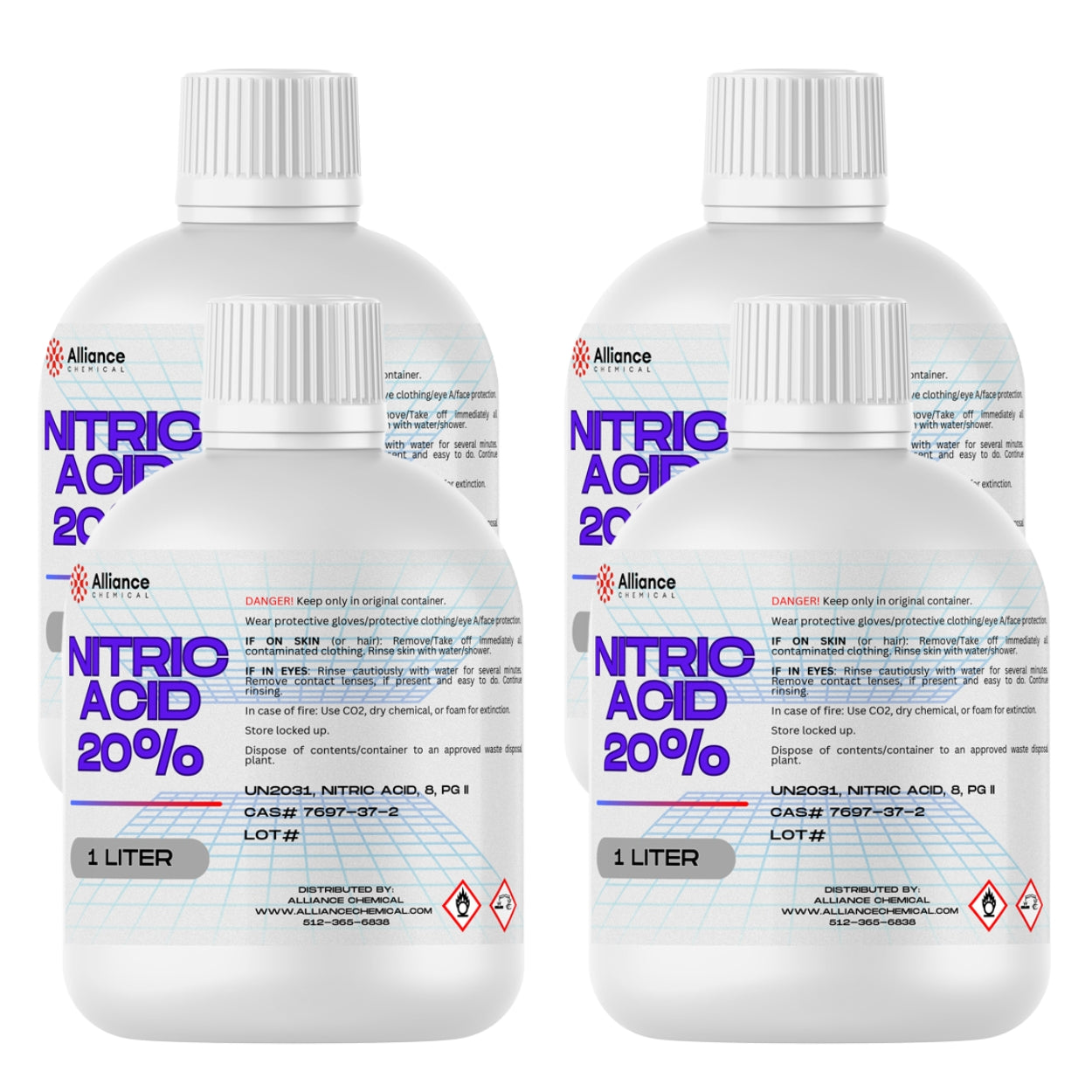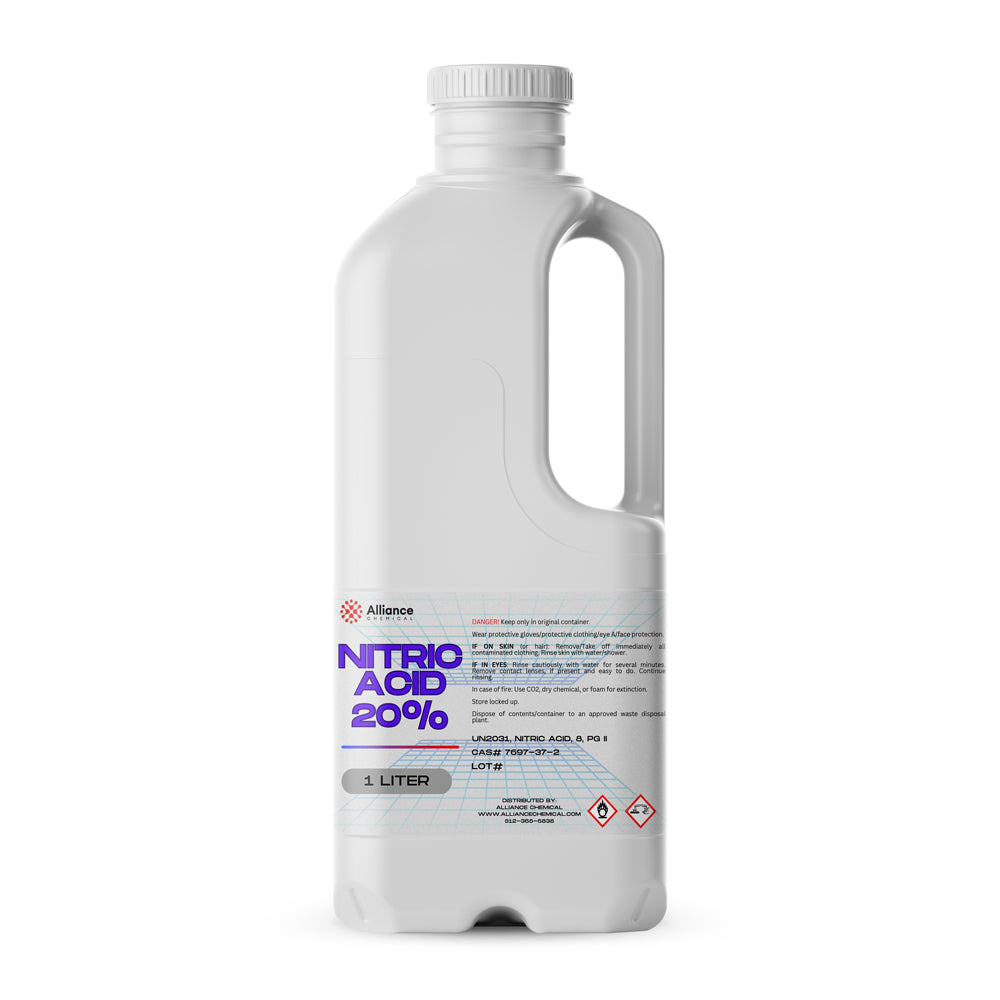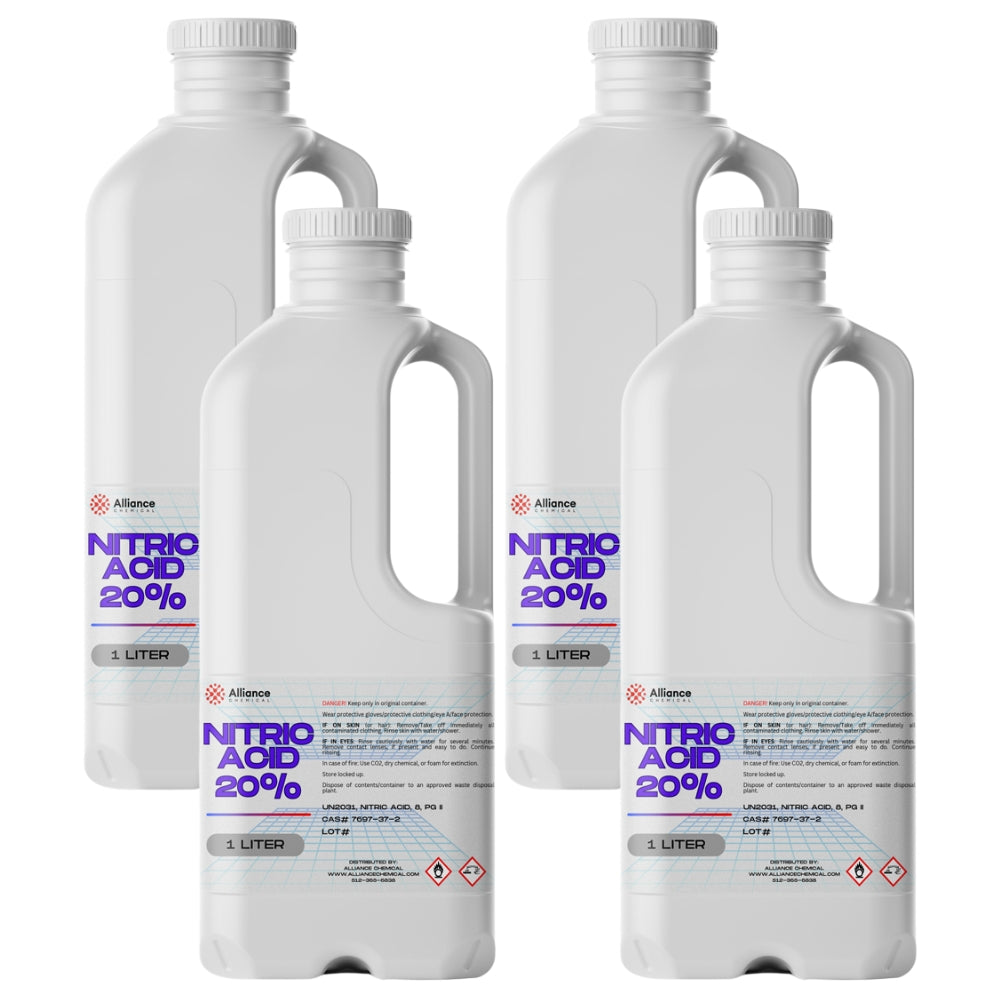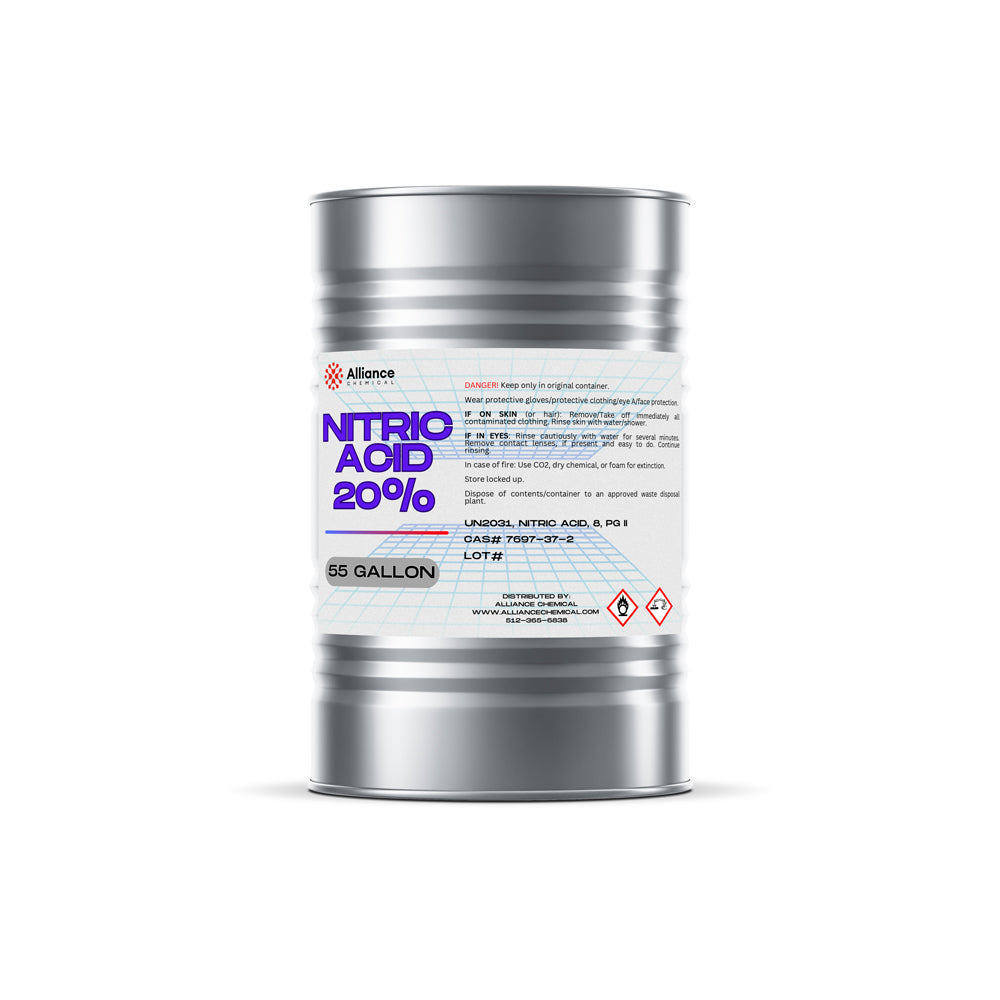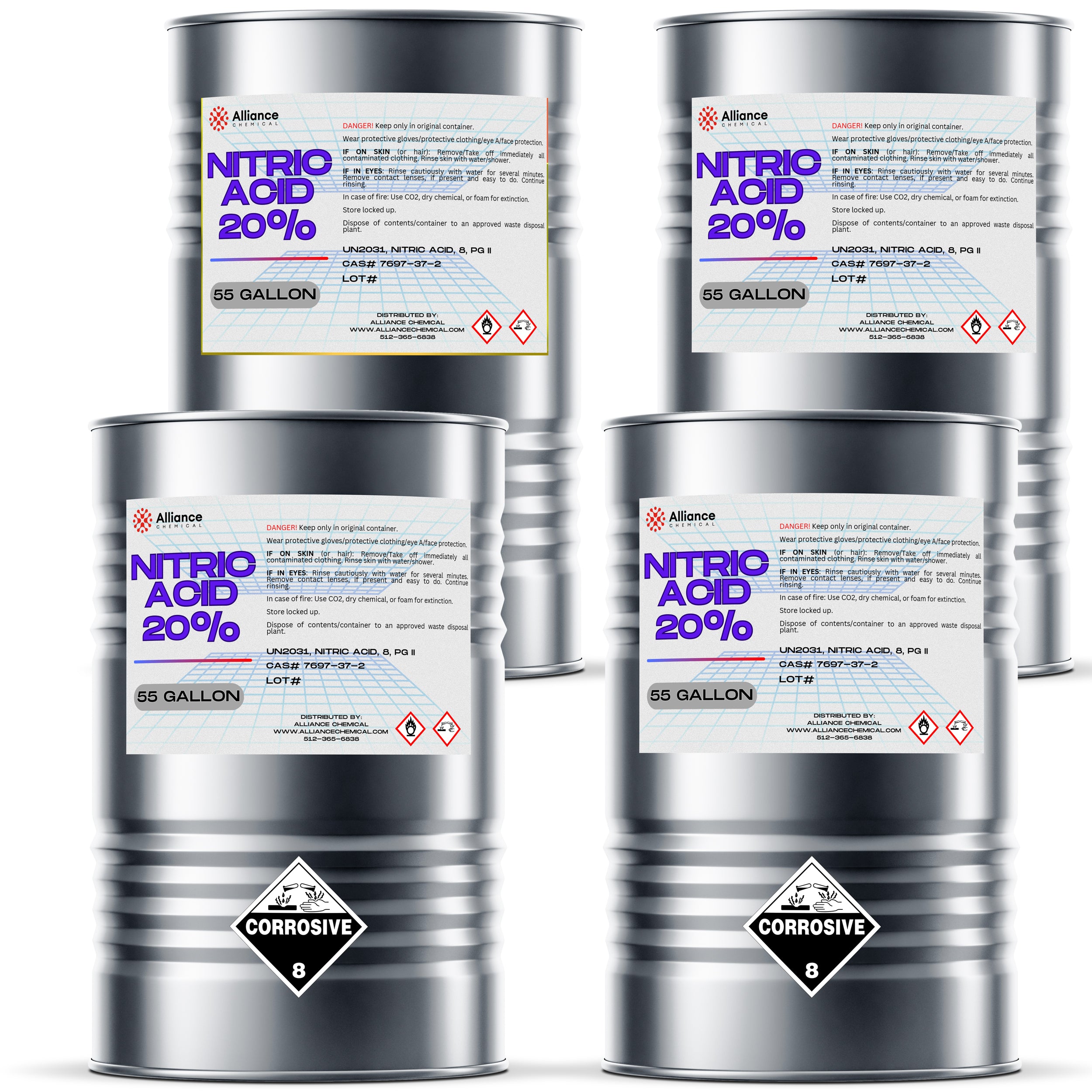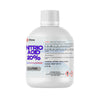Ask a question
Product Overview
Nitric Acid 20% is a dilute aqueous solution of nitric acid (HNO₃) in water, engineered for controlled acidity and stable performance across industrial and laboratory workflows. This solution preserves the strong oxidizing properties of nitric acid while delivering reduced corrosivity relative to concentrated grades, enabling safer handling in applications that require precise acidity control, such as pH adjustment, analytical procedures, and material etching. The product is prepared under stringent quality control to meet technical-grade specifications, ensuring consistent composition with minimal impurities that could affect analytical outcomes or reactive performance. Each batch is characterized by a well-defined assay range and low impurity levels, verified by standard methods to support repeatable process results in manufacturing, chemical synthesis, and research environments.
Its clear, colorless to pale yellow appearance and pungent odor reflect the characteristic nature of nitric acid solutions. The 20% formulation provides a predictable oxidizing potential suitable for dilution-sensitive tasks and compatibility with a wide range of substrates, including analytical reagents, metal surfaces, and water-treatment systems. The product is suitable for use in laboratories and industrial settings where controlled acidity and trace-level impurities are critical for process integrity and measurement accuracy.
Key Properties
- Property Name: Appearance – Clear, colorless to pale yellow liquid
- Chemical Formula: HNO₃
- Molecular Weight: 63.01 g/mol
- Boiling Point: 83°C
- Specific Gravity: 1.086–1.09 at 20°C (typical 1.088)
- Density (25°C): 1.086 g/mL
- Vapor Pressure (20°C): 5 mmHg
- Viscosity (25°C): 1.1 cP
- Refractive Index (20°C): 1.335
- Flash Point: N/A
- Residue After Ignition: Max 0.02% (typical 0.01%)
- Chloride (Cl⁻) Content: Max 5 ppm (typical 2 ppm)
- Nitrate (NO₃⁻) Content: Max 25,000 ppm (typical 15,000 ppm)
- Ammonium (NH₄⁺): Max 2 ppm (typical 1 ppm)
- Sulfate (SO₄²⁻): Max 50 ppm (typical 20 ppm)
- Phosphate (PO₄³⁻): Max 5 ppm (typical 2 ppm)
- Arsenic (As): Max 0.5 ppm (typical 0.1 ppm)
- Heavy Metals (as Pb): Max 0.5 ppm (typical 0.1 ppm)
- Iron (Fe): Max 2 ppm (typical 0.5 ppm)
- Copper (Cu): Max 1 ppm (typical 0.2 ppm)
- Manganese (Mn): Max 1 ppm (typical 0.2 ppm)
- Nickel (Ni): Max 0.5 ppm (typical 0.1 ppm)
- Lead (Pb): Max 0.5 ppm (typical 0.1 ppm)
- Zinc (Zn): Max 0.5 ppm (typical 0.1 ppm)
- Aluminum (Al): Max 0.5 ppm (typical 0.1 ppm)
- Chromium (Cr): Max 0.3 ppm (typical 0.1 ppm)
- Cobalt (Co): Max 0.3 ppm (typical 0.1 ppm)
- Calcium (Ca): Max 20 ppm (typical 5 ppm)
- Magnesium (Mg): Max 20 ppm (typical 5 ppm)
- Potassium (K): Max 5 ppm (typical 2 ppm)
- Sodium (Na): Max 5 ppm (typical 2 ppm)
- Substances Reducing Permanganate: Passes test
- Sulfurous Acid (H₂SO₃): Max 2 ppm (typical 1 ppm)
- Available Chlorine (as Cl₂): 0% (typical 0)
- Note: TDS-compliant testing methods include IC, ICP-OES/MS, UV-Vis, and gravimetric analyses as specified in the accompanying COA
Common Applications
- Application Category: Metal Etching – Used in the etching of metals for circuit board manufacturing and other applications, providing controlled oxidizing capability for surface removal and patterning.
- Application Category: pH Adjustment – Utilized for adjusting the pH of water in various treatment processes, enabling precise acidity control in desalination, cooling systems, and industrial effluent management.
- Application Category: Oxidizing Agent – Serves as a strong oxidizing agent in chemical reactions and synthesis, supporting oxidation steps in manufacturing and analytical procedures.
- Application Category: Analytical Reagent – Commonly used in laboratories for various analytical procedures, including sample preparation, titrations, and calibration routines under controlled conditions.
- Application Category: Nitrate Production – Used in the production of nitrates for fertilizers, where controlled nitric acid content facilitates downstream synthesis and formulation.
Safety Precautions
First safety paragraph: Handle Nitric Acid 20% with appropriate PPE, including chemical-resistant gloves, splash-protection goggles, and a lab coat or impermeable apron. Store in a cool, dry, well-ventilated area in HDPE or glass containers, away from incompatible materials and sunlight to prevent degradation. Ensure segregation from bases and reactive metals; use secondary containment in case of spills. Implement appropriate ventilation systems to manage vapors and minimize inhalation exposure. Follow standard operating procedures (SOPs) and OSHA-compatible risk assessments during handling, packaging, and transport.
Second safety paragraph: Exposure to nitric acid can cause severe burns and respiratory irritation. Follow SDS guidelines: use proper emergency eyewash and shower facilities, prepare for metal corrosion hazards, and monitor exposure limits per applicable regulatory standards. In case of contact with skin or eyes, rinse immediately with copious water for extended periods and seek medical attention. In case of inhalation, move to fresh air and seek medical evaluation if symptoms persist. For ingestion, do not induce vomiting and seek immediate medical help. Transport as UN 2031, Nitric Acid, Class 8, PG II, and comply with all relevant local and international transport regulations.
Benefits
✔ Controlled Dilution and Stability – The 20% formulation provides predictable acidity and stability across processing conditions, with tight assay and impurity control verified by standardized methods.
✔ High Purity for Analytical Integrity – Trace metal and impurity levels are minimized (ICP-OES/ICP-MS validated) to support reliable analytical results and reproducible experiments.
✔ Industry-Standard Compliance – Meets Technical Grade specifications and aligns with ASTM/ACS guidelines for technical-grade nitric acid products, accompanied by a complete COA and SDS for safe handling.
✔ Versatile Integration – Suitable for metal etching, pH adjustment, oxidation steps, and analytical workflows, with broad compatibility across materials and processes.
| Property | Value |
|---|---|
| Molecular Weight | 63.01 g/mol |
| Formula | HNO3 |
| Assay | 20% |
| Grade | Technical |
| Form | Liquid |
| Solubility | Miscible with water and most organic solvents |
| Appearance | Clear, colorless to slightly yellow liquid |
| Melting Point | -42 °C |
| Boiling Point | 83 °C |
| Specific Gravity | 1.11 |
| Industry | Industrial, Environmental, Wastewater |
EGQ-PSO-VDM
$20.11
Unit price
Compare Products
| Price |
|---|
| SKU |
| Rating |
| Discount |
| Vendor |
| Tags |
| Weight |
| Stock |
| Short Description |

